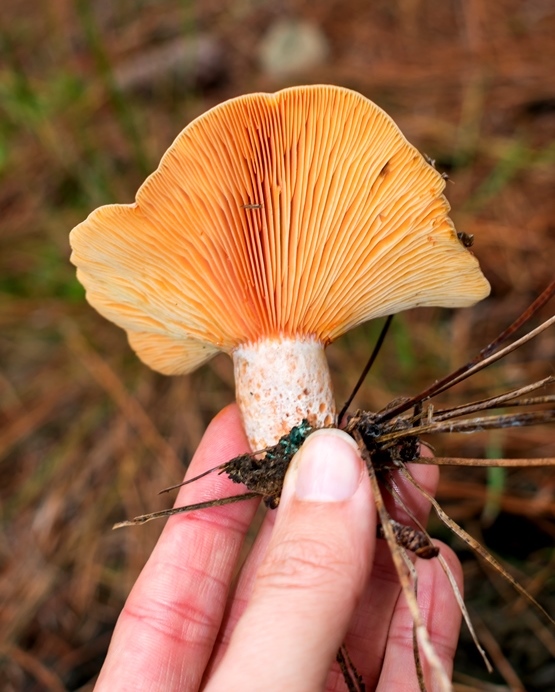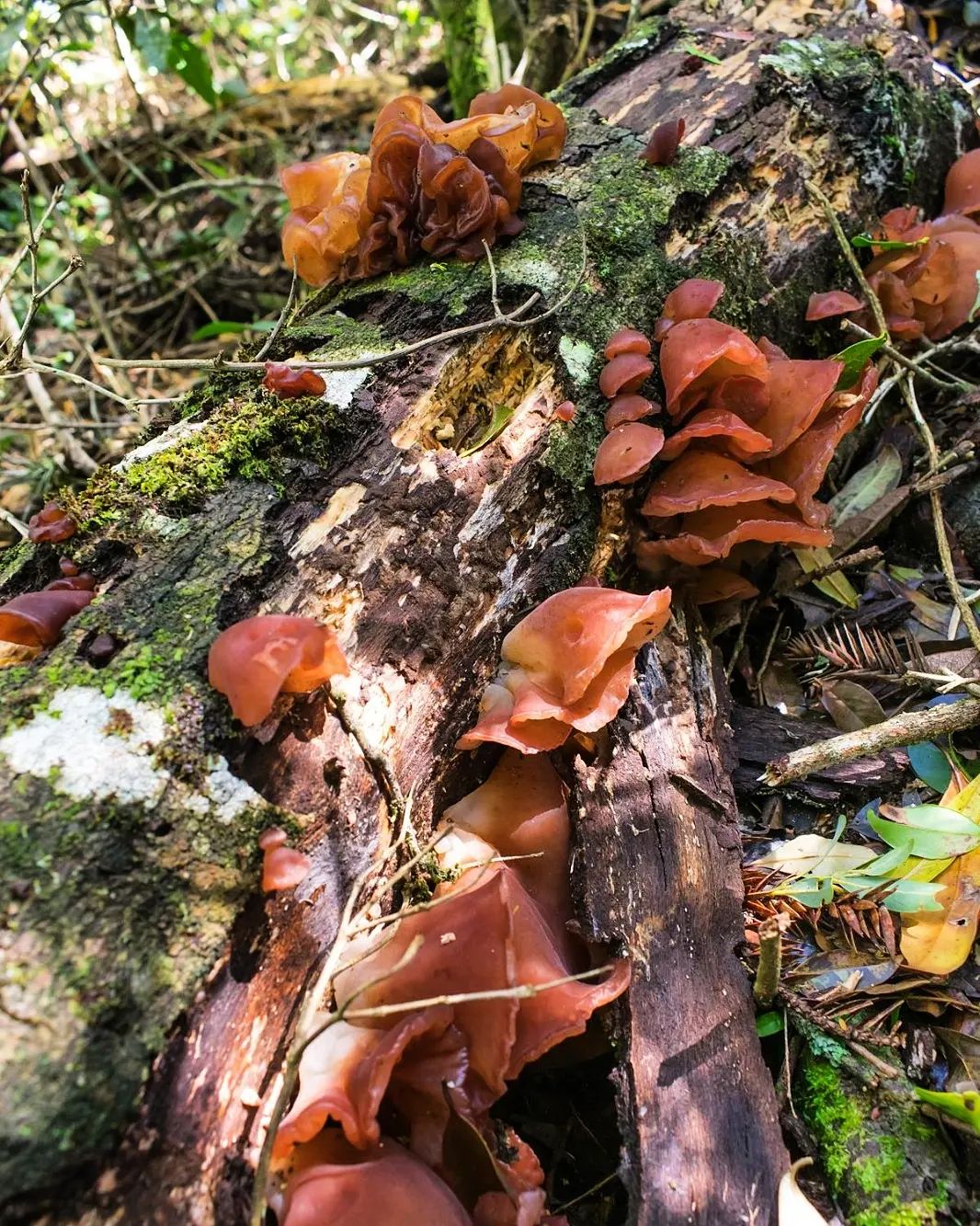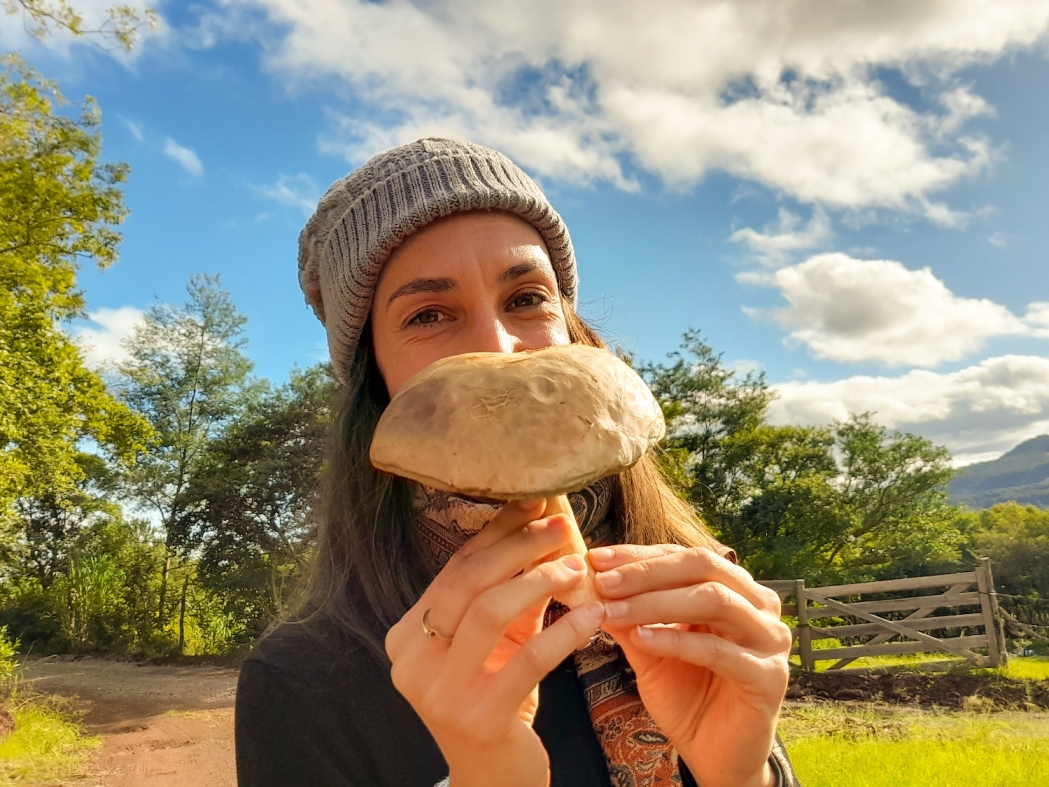Ever since I met my husband and he told me about his mushroom hunts in the south of France, I have been absolutely enchanted by the possibility of not only finding beautiful mushrooms/fungi in the forest, but especially finding those that are edible and delicious.
Is there anything more wonderful than combining a hike in the woods with surprise encounters with beautiful and mysterious organisms, taking nice pictures of them, and on top of that being able to eat several, which are very tasty, nutritious and even medicinal? For someone who loves nature (and photography), this is a perfect combination.



This might sound a bit strange to someone who grew up in a country where foraging mushrooms is common, but in Brazil this is not part of our culture at all, and not an obvious activity to engage in.
There is a lot of fear and ignorance about fungi in general, which are considered by many dangerous and/or strange and disgusting. Even eating cultivated mushrooms is not very common, and has only started to gain a little traction and popularity in the last 15 years or so.
I speak of the population in general, but there are exceptions like some indigenous peoples such as the Yanomami from the Amazon region, who traditionally consume mushrooms and have a lot of knowledge to share about it. But also only recently this knowledge has been shared with a greater part of the population.
Anyway, it took years for us to be in a region more suitable for mushroom hunting, with access to clean and preserved forests and woods, and also fields and pine plantations – in Brazil most land is private, and often parks and preserved areas that are public are far and lack public transportation to access them.


We lived in many different areas of Brazil but in 2022 we ended up moving to the Serra Gaúcha, a mountainous region in the South of Brazil, which is also one of the most popular regions in the country for mushroom foraging.
This is due to the variety of mushrooms that can be found here all year round. It’s a region where there is a lot of rainfall consistently throughout the year, the temperatures are often mild for most of the year, and there’s still plenty of areas of preserved Araucaria moist forest (Mixed ombrophilous forest or Montane subtropical moist forest), a ecoregion which is part of the Atlantic Forest biome.
But although this very special and threatened native forest has an amazing biodiversity, including fungi, there’s still a great lack of studies and knowledge about native mushrooms. So currently the most popular mushrooms for foraging in Brazil are not those which are native to the Atlantic Forest, it’s exotic (non-native) ones that grow mostly in association with pine (Pinus sp.), and since there is a lot of pine plantations in this region, it’s one of the main reasons for its popularity among foragers.


The most popular is certainly Boletus edulis (known by its Italian name Porcini here in Brazil), but also Lactarius quieticolor, Suillus sp., and Amanita muscaria, for those looking for recreational/medicinal uses.
And speaking of recreational uses, “magic mushrooms” that grown mainly on fields and on dung like species of Panaeolus and Psilocybe are also a popular target for some mushroom hunters here in Brazil.
Little by little, mainly in the last 10 years or so, there have been an increasing number of biologists and other specialists offering guided mushroom hunting events in various parts of the country (mostly in the South and Southeast). However, the cost of participating is usually quite high for the average Brazilian, in addition to the cost of travel to the event location, which unfortunately becomes prohibitive for many people.
In general, mushroom hunting is still an activity practiced by a very, very small percentage of the population. Which in a way bring its own advantages, as there is almost no competition when foraging.
Best time to hunt mushrooms in Brazil



Brazil is an enormous country, it’s impossible to give a definite answer to that. In most parts of the country it will depend on when is the rainy season. Here in the South of Brazil, specially in the Serra Gaúcha, there is no dry season so what you need to look out for are the seasons/temperature change.
The “imported” (exotic) mushrooms are found here in Autumn and Winter, as they need a certain combination of cold/humidity to appear. As mentioned above, these are mainly Boletus edulis, Suillus sp., and Lactarius quieticolor.
But the many native edible fungi usually can be found from Spring to Autumn, there’s really only a decrease in Winter as the temperatures get quite low (below 0ºC and with many days of frost), but even then we can get weeks of good weather in Winter and the native mushrooms pop up.
Some examples of native mushrooms are those from the genera Pleurotus (Oyster mushrooms), Lentinus, Auricularia (Jelly ears), Armillaria (Honey mushrooms), Favolus, among many others.

As everywhere else, some seasons may be super abundant in certain species, other seasons much less so, sometimes you find mushrooms outside the “normal” season, etc. And, of course, things are really getting more and more unpredictable with climate change.
I have been hunting mushrooms in Brazil and learning more about them for about 2 years now, and it’s been an amazing and rewarding journey. It started mostly with a desire to find the edible ones, but ended up with a fascination for all these weird little “creatures”. Apart from the posts on this website, you can check out my Instagram and my iNaturalist profile to see a bit more of what kinds of mushrooms I have been finding around here.
📸 Pictures made in São Francisco de Paula, Rio Grande do Sul (Serra Gaúcha, South of Brazil).



